*FYI - this post may contain affiliate links, which means we earn a commission at no extra cost to you if you purchase from them. Also, as an Amazon Associate I earn from qualifying purchases. Check out our Privacy Policy and Disclosure. for more info.
Finding interesting facts about Rome isn’t difficult.
After all, this is a city with a millenia-long history starring one of the most powerful empires to ever exist, so there’s plenty of material to draw from (and plenty of time for some truly insane things to take place).
And since I love reading up on all the best stories and random facts about destinations before I visit, I figured it was time to put together a list of Rome facts for travel nerds just like me.
Knowing all these Rome facts/stories made my recent trip 1000x more magical and interesting… plus it kept my boyfriend entertained too. So, I hope you enjoy reading these fun Rome facts, whether you’re planning your own trip or just dreaming for now!
Headed to Rome? Be sure to check out my top Rome posts:
1. Rome’s Origin Story Involves a She-Wolf, Twins & Murder
Archeological evidence suggests that humans may have occupied Rome for thousands of years before 753 BC, but the most common “founding tale” of the city follows the story of twins Romulus and Remus.
Said to be the sons of Mars born to Rhea Silvia (daughter of King Numitor), the two were sent down the Tiber River to drown by their uncle, who were threatened by their claim to the throne.
In spite of familial murder plots, the two miraculously survived, washing up on the shores of the Tiber River at the foot of Palatine Hill.
There, the legend goes that they were nursed back to health by a she-wolf (most accounts use the word ‘suckle’, which weirds me out a little but I digress), before they were rescued and raised into respectable young men by a shepherd named Faustulus.
As adults, they would return to Palatine Hill, the very place their lives were saved, to establish a new town of their own.
… But, as many of these stories tend to go, there was a vague and petty quarrel, resulting in Romulus killing his brother Remus, proclaiming himself King and then naming their shiny new town after himself… hence the Eternal City we now know and love: Rome.

2. The “Spanish” Steps Aren’t Actually Spanish
In Italian, the official name of the steps is actually Scalinata di Trinità dei Monti, with no mention of Spain at all.
Complicating matters further, it was a French financier named Étienne Gueffier who funded the steps.
Why a French financier for the Spanish Steps? Ironically, crowning the Spanish Steps is the Trinità dei Monti, a French church originally commissioned by King Louis XII of France – and even today is held by a French Cardinal.
The exact origins of why they became ‘the Spanish Steps’ in English aren’t known, but some speculate it has to do with the English poets who moved into the area in the 19th century and (as we English speakers often do) completely butchered the name and made up our own.
But in any case, whether French, Spanish, Italian (or a mix of all three) – these steps are a must-see and must-climb in Rome. Just don’t sit down – doing so is illegal, and subject to a 400 euro fine… although in reality, you’re more likely to just get whistled at by some omnipresent guards.
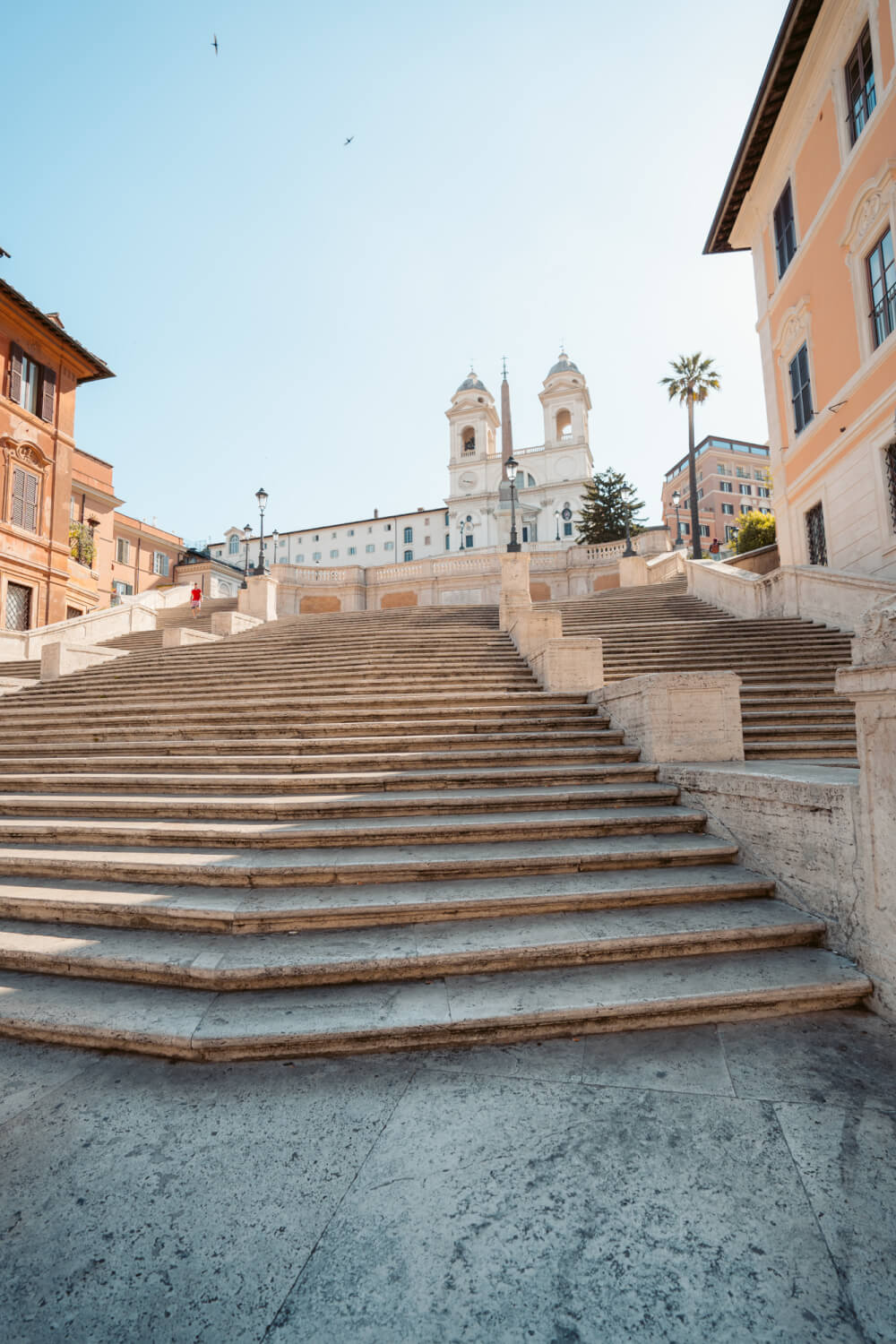
3. Piazza di Spagna is so-named thanks to an embassy
… but not just any embassy! Specifically, the Spanish Embassy to the Vatican which has been housed in this square since the 17th century.
Some sources even say this is the oldest embassy in the entire world.
4. John Keats died in Piazza di Spagna
More accurately, he died in an apartment located in the square, specifically at 26 Piazza di Spagna which is today home to the Keats-Shelley House.
Ironically, the museum’s two namesake poets were apparently not that close.

5. The design of the Trevi Fountain was decided through a competition
Just like the nearby Spanish steps, the design of the Trevi Fountain that every visitor ogles today was chosen thanks to a competition… Back in 1732, Pope Clement XII invited local artists to design an expansion for the existing (not so glamorous) fountain at the end of the Acqua Vergine.
And although architect Nicola Salvi ultimately won, there are rumours that Alessandro Galilei (yes, related to THAT Galileo) was originally the first pick…
However, he supposedly had his post taken when Romans complained that he was from Florence, rather an original Romie-Homie. “He doesn’t even go here!”
The theme chosen for the fountain was ‘Taming of the Waters’, with three main statues: Oceanus, Abundance, and Health, along with other smaller statues that represent the fertility of earth.
Sadly, Salvi passed away before the fountain was completed (a construction project which took 30 years, and was partially funded by the local lottery!), but I’m sure he’d be thrilled to see what an Instagram hotspot his creation has become.
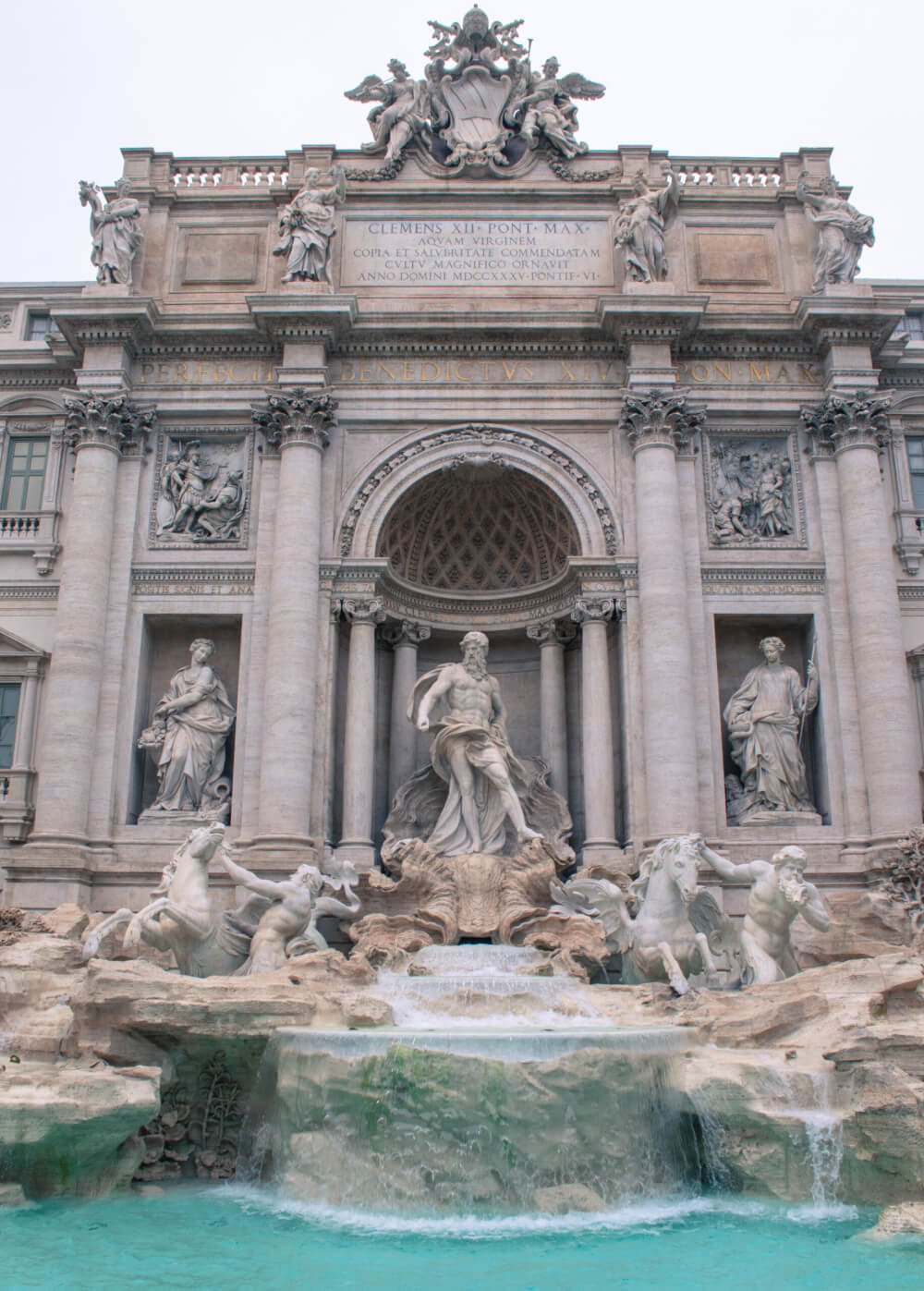
6. In Rome, there are ruins in the most unexpected of places
The basement level McDonalds at Termini Station for instance has pieces of the Sevrian wall right next to the ordering machines and dining tables.
The Rinascente department store flagship location on Via Tritone also has ruins from an ancient aqueduct.
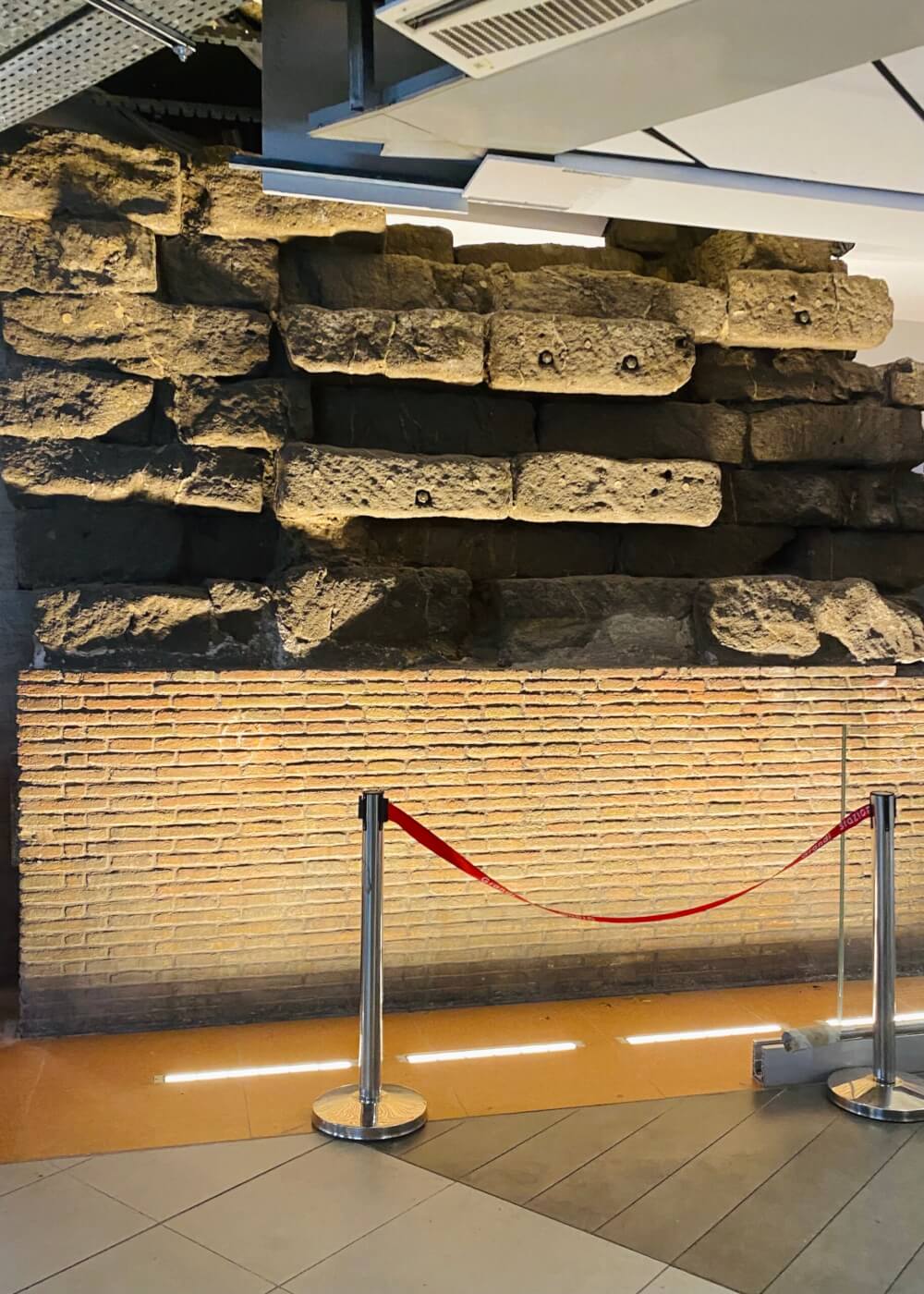
7. The Pantheon is home to the world’s largest unsupported concrete dome
It weighs a shocking 4535 tonnes. That’s about 900 elephants worth of concrete, or the weight of around 275 million McNuggets. Yes, I did the math.

8. Rome has over 900 churches
Here are some of the most unique ones:
- St Peter’s Basilica: The largest church in the world (technically in Vatican City, but well worth a mention)
- Basilica di San Pietro in Vincoli: A church home to the chains said to have held St Peter prisoner in Jerusalem, and Michelangelo’s famous Moses statue
- Santa Maria degli Angeli e dei Martiri: A church designed by Michelangelo in old bath house ruins with a cool Meridian Line
- Chiesa di Santa Maria della Vittoria: Home to the Ecstasy of Saint Teresa, possibly the most famous of Bernini’s sculptures
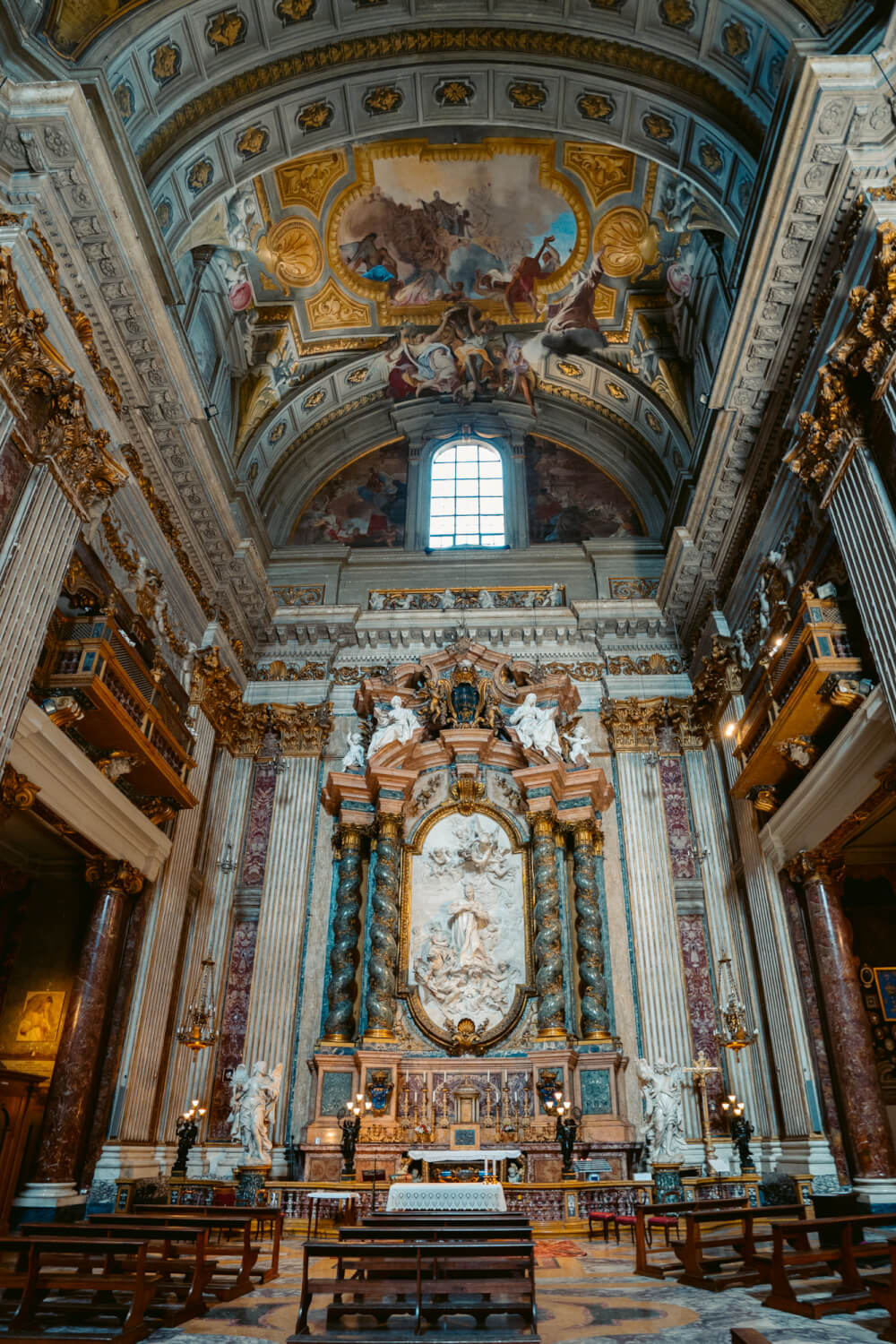
9. The Pantheon’s large inscription out front is actually inaccurate
When standing in front of the Pantheon, most visitors will notice the large inscription at the top – “M. Agrippa L. F. Cos. Tertium fecit”.
Well, it might surprise you to know that this is actually a misleading attribution of credit.
Translated to “It was built by Marco Agrippa, son of Lucio, in the year of his third consulate”, this very grand equivalent of “MARCO MADE THIS” isn’t entirely accurate, as the original temple commissioned by Agrippa actually burned down in the year 80 AD. 30 years later, its replacement Pantheon would also burn down after getting struck by lightning.
… But third time’s the charm!
When Emperor Hadrian built the final version of the Pantheon as we know it today, he decided to keep the original inscription with Agrippa’s name, likely to the chagrin of his actual architect Apollodorus of Damascus, who sadly got no giant slabs of credit.
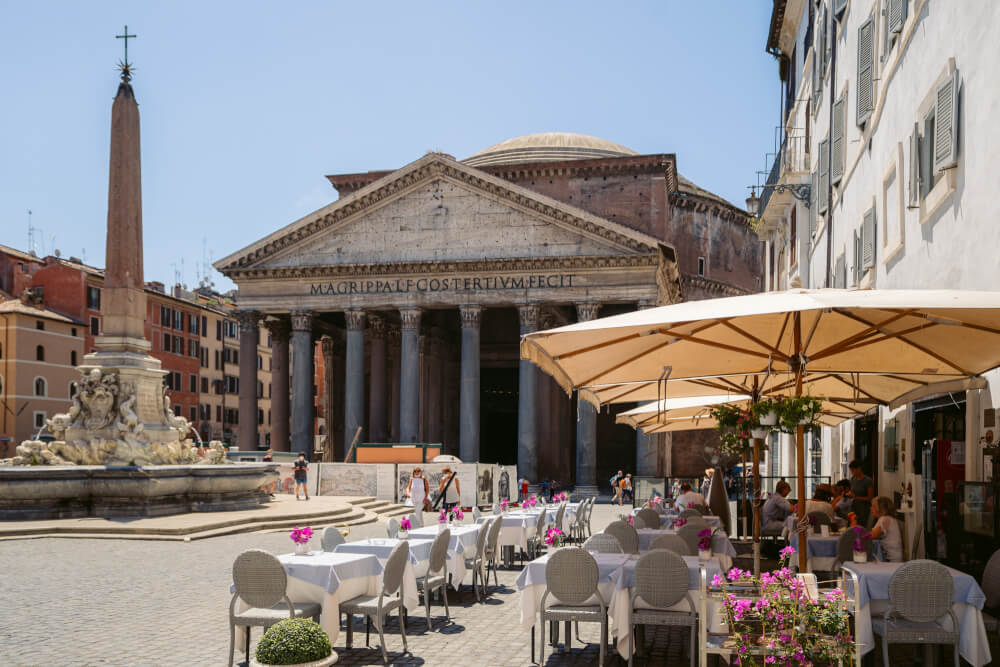
10. Piazza Navona used to have a lake
It’s actually pretty genius if you think about it… For two centuries every August, the city used to flood Piazza Navona by blocking the drainage systems of the fountain, creating a makeshift lake – Lago di Piazza Navona, where locals could cool down.
… And if you are visiting Rome in the peak season, you are likely wishing this were still the case!

11. Bernini and Borromini had some seriously petty disagreements
When in Rome, you’ll hear the names Bernini and Borromini countless times, thanks to their work which is liberally sprinkled throughout the city.
What many visitors don’t realize is that these two were actually known to be rivals back in the day – a classic tale of two competing artists, one known to be charming and social (Bernini) and the other much quieter and more volatile (Borromini).
The best known remaining example of their feud is where you stand, at the Chiesa di Sant’Ivo alla Sapienza. For years, Bernini seemed to have been ‘the favourite’ among the two (especially with Pope Urban VIII), getting commissioned for important projects like updating St Peter’s and of course, the Sant’Ivo alla Sapienza.
When Pope Urban VIII died however, his successor handed over the project to Borromini, who (according to popular legend) sculpted some donkey ears on the facade to taunt Bernini.
Coincidentally, Bernini happened to live right next door, and so sculpted a lovely phallus on the facade of his home pointed right back at the construction site.
While none of these petty sculptures remain, their story serves as a lasting reminder that pettiness and spite are universal and enduring traits of mankind.
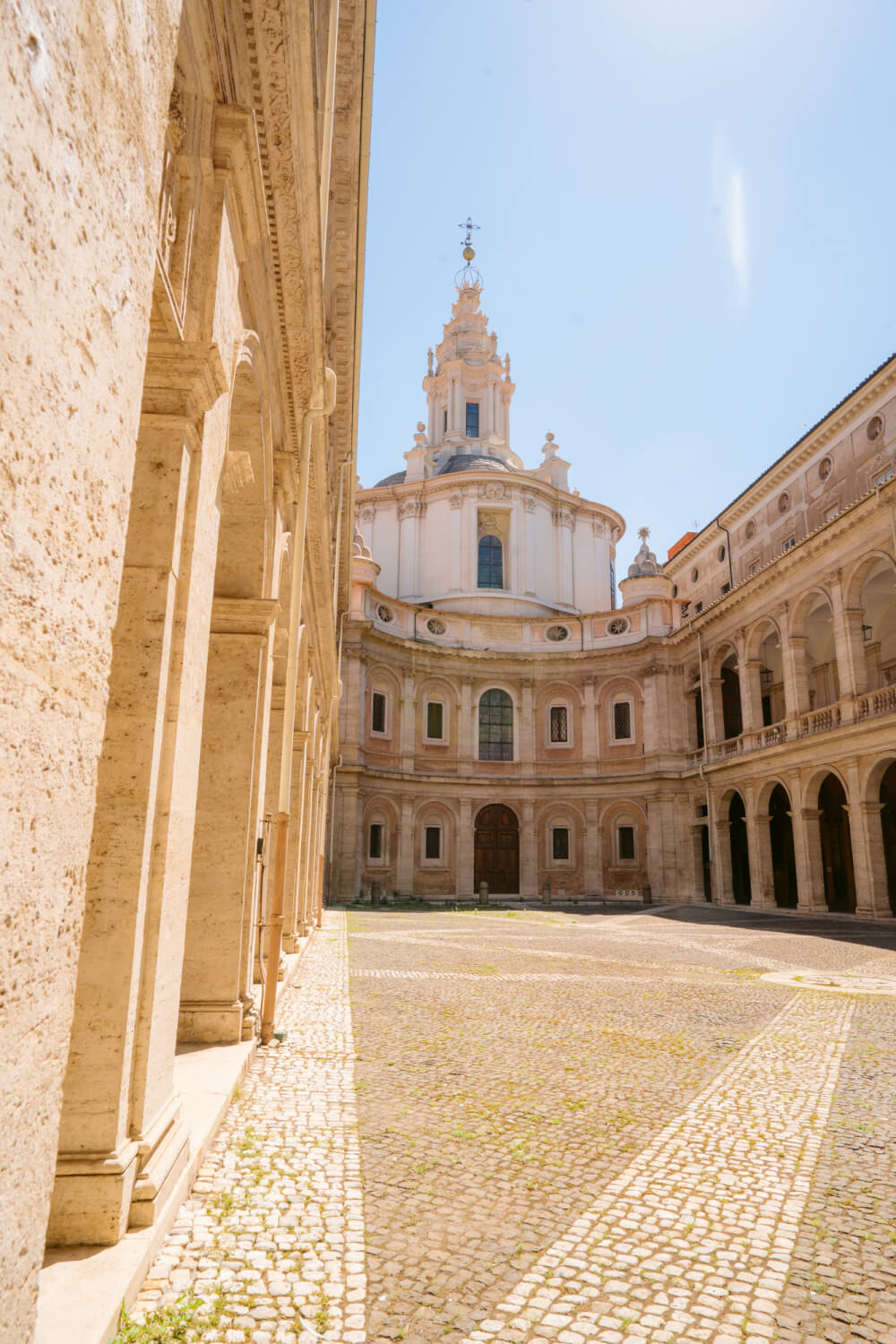
12. The Madonna painting in Passetto del Biscione inspired a popular idiom
Back in 1796, Rome was sent into a frenzy when it was reported that a painting of Madonna (located in Passetto del Biscione) had eyes that were miraculously moving.
Countless worshippers flocked to the site to see for themselves, but had great difficulty thanks to the hidden nature of the passage.
This would go on to inspire the popular Roman saying “andare a cercare Maria per Roma”, which translates to “looking for Mary in Rome”, a phrase now used to describe the difficulty of finding something.
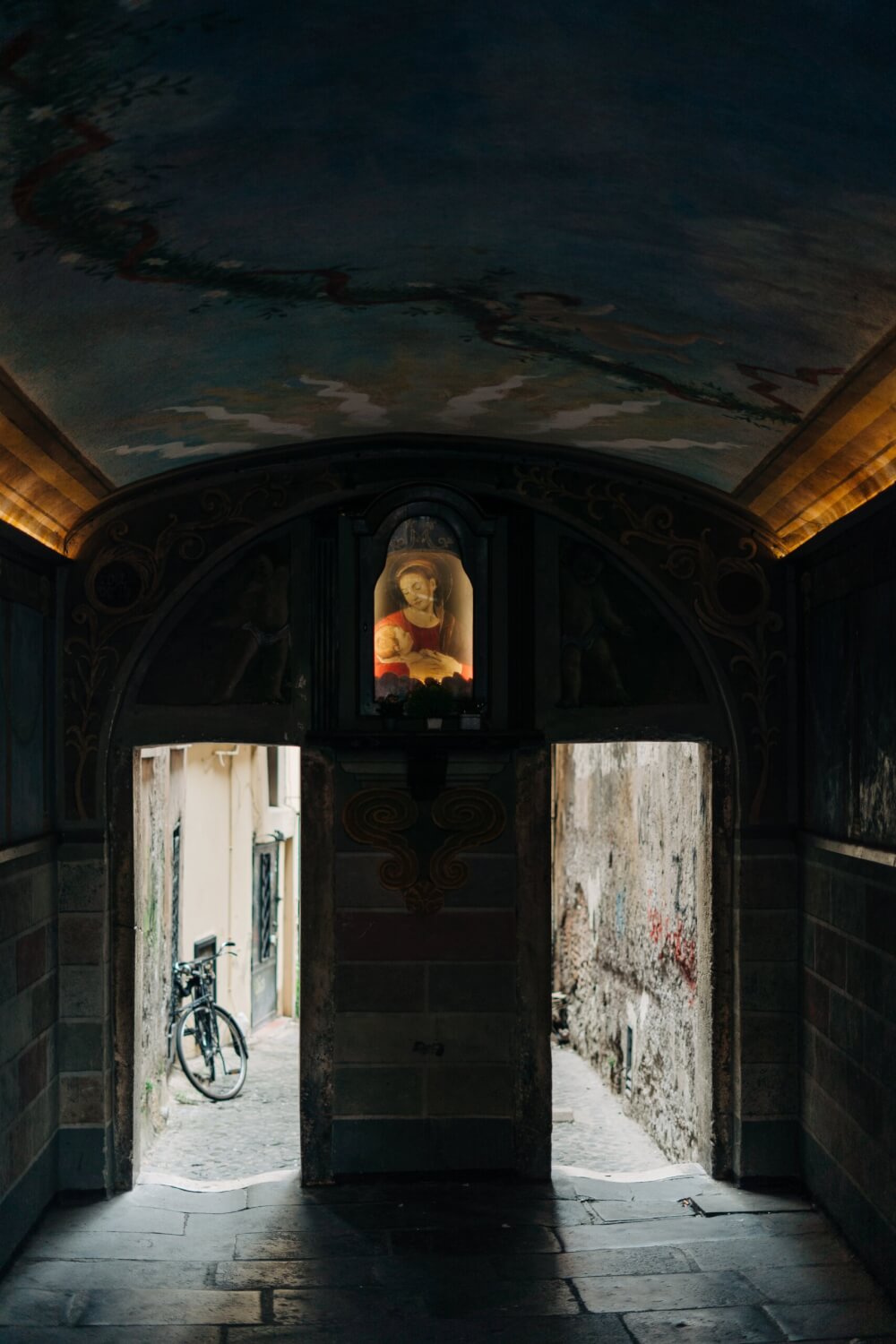
13. The Vittoriano’s design was originally meant to be very different
Much like other Roman landmarks like the Spanish Steps and Trevi Fountain, the Vittoriano’s unique design came from a competition… or actually – two competitions.
The winner of a 1st competition launched in 1880 had originally envisioned an exedra in Piazza Termini, but the plans were eventually scrapped, and ultimately, it was an eclectic design by Giuseppe Sacconi that was chosen two years later.
Inspired by famous Hellenistic monuments like Pergamon Altar, his winning design incorporated a grand staircase with an elegant colonnade, and plenty of statues commissioned from renowned sculptors from across Italy.
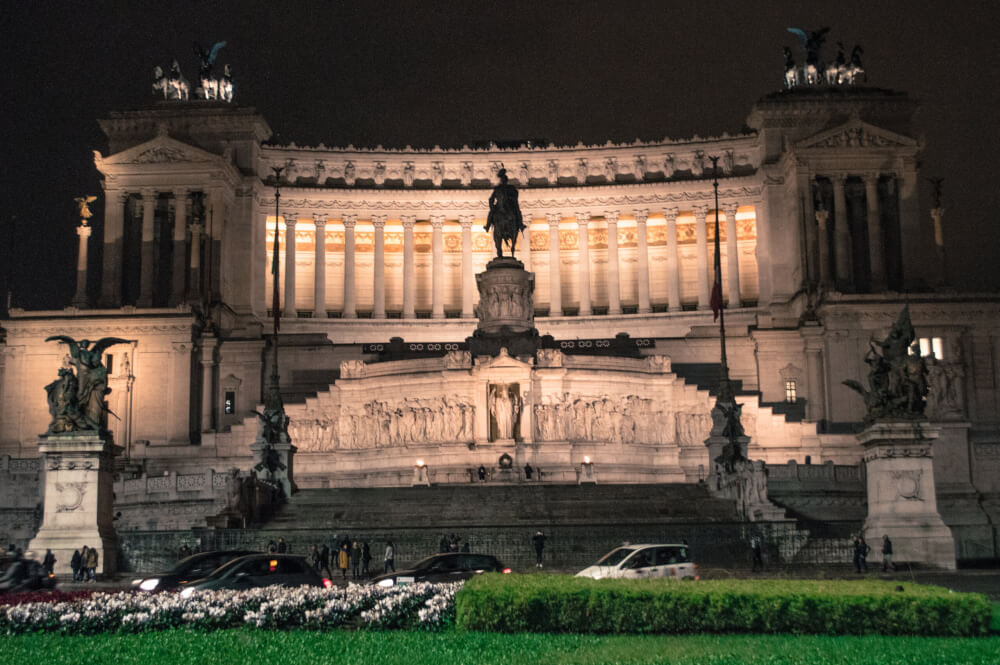
14. The Vittoriano’s central statue is 12m high, making it the biggest in Rome
It is so large in fact that they hosted celebratory drinks inside the horse’s belly before they put the statue together. See the photo here for yourself!

15. One of Rome’s most famous fountains has a peculiar origin story
The Fontana delle Tartarughe (Turtle Fountain) is considered one of the top must-sees in Rome’s Jewish Ghetto, known for its cute bronze turtles that are attributed to Bernini.
And while the original turtles are long gone (one was stolen by vandals, while the others are now safely kept in the Capitoline Museums), the fountain’s magical appeal still radiates from its central perch in Piazza Mattei, where it has sparked rumours and speculations for centuries.
You see, back in the 17th century, people often misattributed the fountain to Raphael and Michelangelo, which helped the fountain rack up plenty of (unwarranted) street cred.
But even before that – the fountain was beloved, earning high praise from local writers, one of which even called it “the most beautiful and perfect fountain in Rome.”
The (most likely false) origin story of the fountain is also a popular local legend – it is said that the fountain was commissioned by Duke Muzio Mattei, who was left broke from his gambling habits but needed a way to impress the father of the woman he wanted to marry.
And so, as any reasonable young man would, he demanded a glorious fountain be built overnight just outside his window, so that he could impress his prospective father in law and gain his blessing to marry. Apparently, it worked!
To commemorate the event, Mattei supposedly bricked up his entire window, a sight which you can still actually still see in the square today.
Fact or fiction – you decide, but this fountain remains one of the most legendary sights in the Jewish Ghetto.
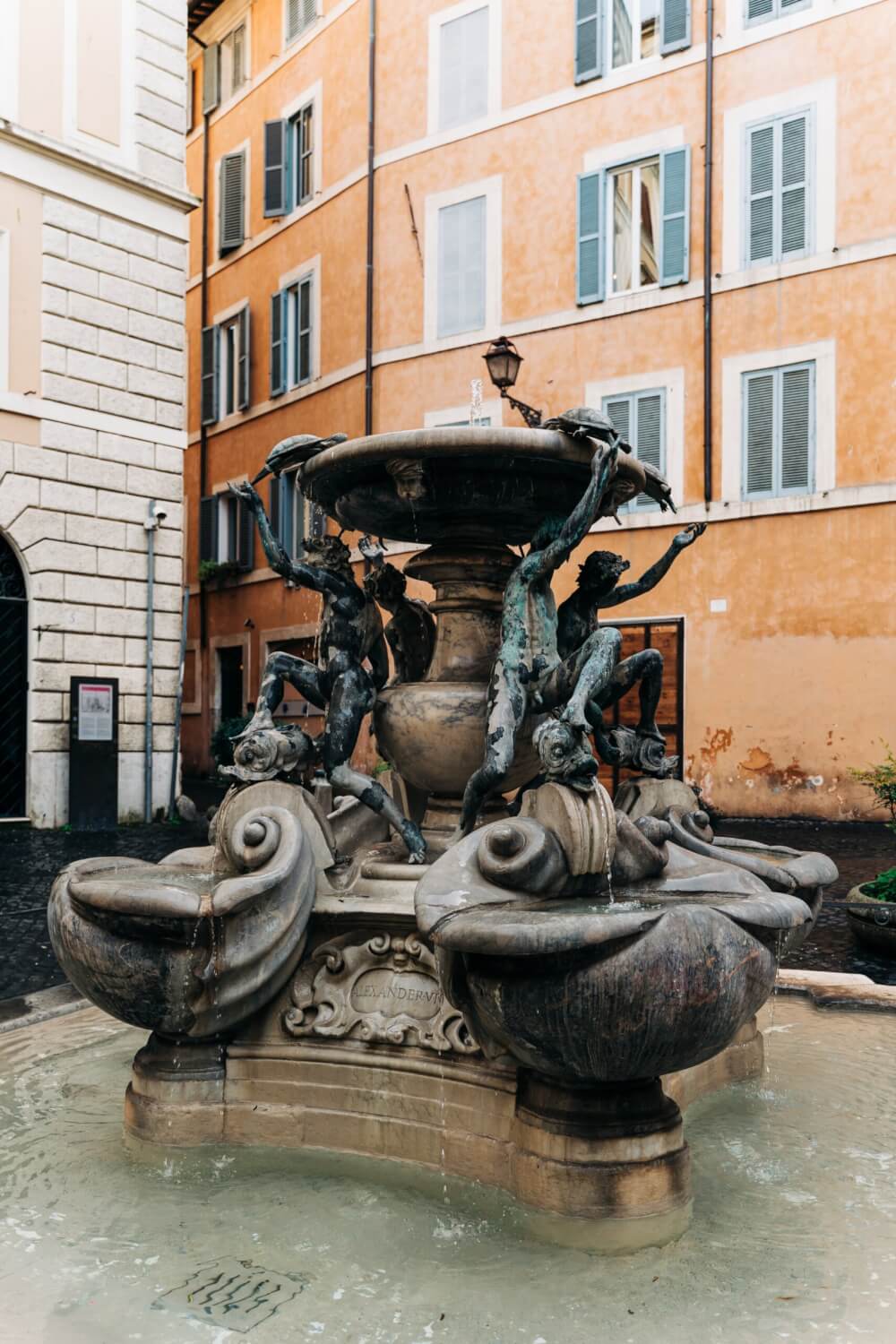
16. Tiber Island’s Fatebenfratelli Hospital acted as a safe house during the Holocaust
In the Fall of 1943, Nazi troops began to round up Jews in Rome to deport to concentration camps like Auschwitz.
But when a group of Jews sought refuge at Fatebenefratelli, anti-Fascist doctors managed to save many lives by diagnosing Jewish patients with a fabricated illness known as “Syndrome K”, a disease they claimed was highly contagious and deadly, thereby deterring soldiers from coming to check on the patients.
This valiant act of defiance would end up saving dozens of Jewish lives from persecution, earning the hospital the title of “House of Life” from the International Raoul Wallenberg Foundation, which recognizes prominent rescue feats from the Holocaust.
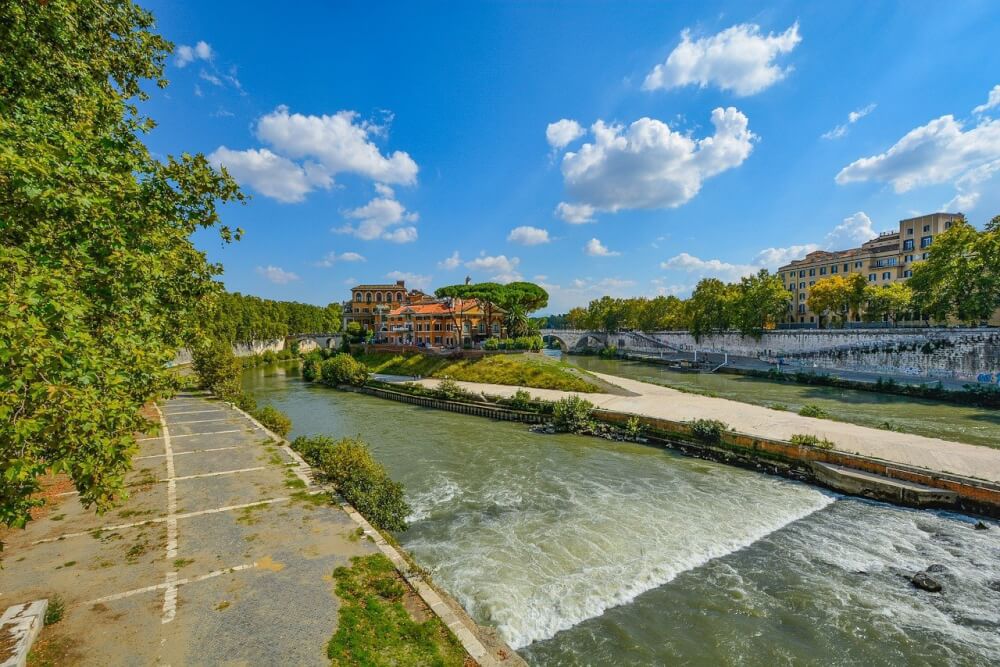
17. Michelangelo’s Pietà is now behind glass due to a hammer attack in 70s
May 21, 1972 was a regular day in Vatican City. Tourists (as usual) were arriving in droves to see St Peter’s Basilica.
On every tourist’s agenda of course was a viewing of the famed Michelangelo masterpiece, the Pietà, which is a stunning depiction of the Madonna cradling Jesus’ body after he was removed from his cross post-crucifiction.
Well, it was all pretty regular until unemployed Hungarian geologist Laszlo Toth lunged at the statue with a hammer.
He produced 12 blows to the statue in total, breaking her nose in three parts, and knocking off the statue’s left arm.
Over 100 fragments were produced and scattered in front of the statue, one of which was picked up (and then later guiltily mailed back) by an American tourist.
Following a months-long restoration however, the Pietà was restored to her former glory, albeit with a shiny new bulletproof glass panel that now shields it from any further Hungarian hammer attacks.

18. There once was a war between Valentino and McDonalds
The year was 1986, and Italians were appalled at the latest addition to Rome’s city center – a McDonalds only metres away from the famed Piazza di Spagna… Italy’s 1st location of the infamous American chain, and actually the largest in the world at that time.
Not only did McDonalds’ arrival spark mass protests, it caught the attention of fashion giant Valentino, whose Roman HQ can be found in the Palazzo Gabrielli-Mignanelli, metres away from the record-breaking McDonalds.
According to employees of Valentino, that all-too-familiar stench of McDonalds fries and Big Macs made it impossible for them to work. Legal action ensued, and compromises were made.
Nonetheless, despite multiple setbacks, the Golden Arches persevered, and are still standing in that original location today… alongside almost 600 other locations across Italy.
19. Dickens once wrote about executions in Piazza del Popolo
Piazza del Popolo is a famous square in Rome known for its abundance of beautiful sights and attractions.
Lesser known perhaps is that this square was once a popular setting for public executions, which went on as recently as 1826.
This history is so recent in fact that there are written accounts of these executions from famous writers like Charles Dickens, who wrote about witnessing a beheading on this very square.
Side note: You can actually read a weirdly detailed list here of people who were executed here (along with their crimes).
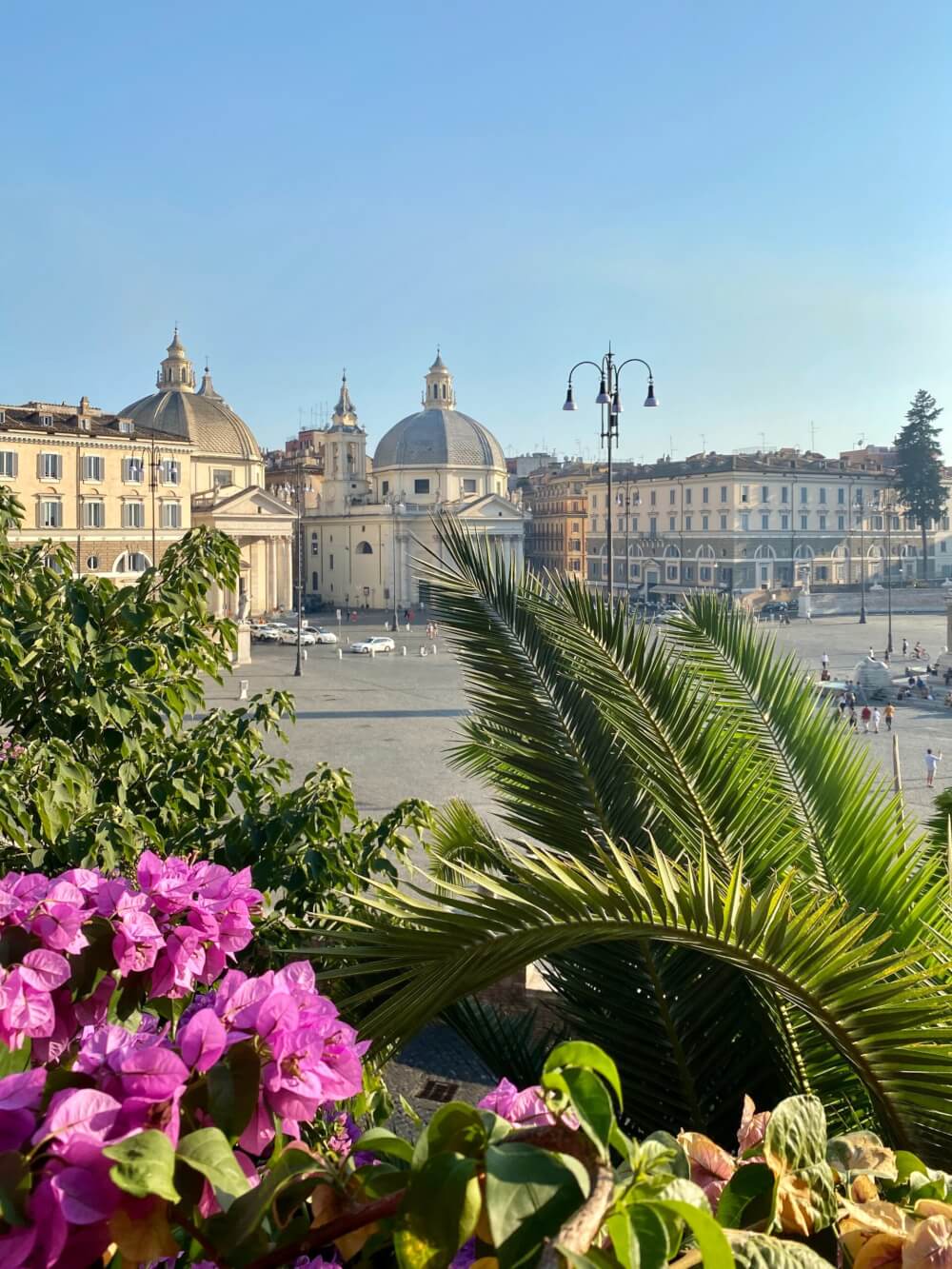
20. There are more obelisks in Rome than in Egypt
Why so many? It may be difficult to imagine, but at its peak, the Roman Empire stretched all the way to Egypt, which for centuries was home to the wealthiest province of the entire empire outside of modern-day Italy.
Obelisks became an emperor-fave to take back to Rome as trophies, an obsession that became so popular that Rome’s obelisk collection is actually bigger than Egypt’s.
You’ll find thirteen across the city, like the Flaminio Obelisk in Piazza del Popolo, which was one of the first of such “trophies” to be transported to Rome, back in 10 BC, and the Vatican Obelisk, said to be the only one that has not toppled since Roman times:
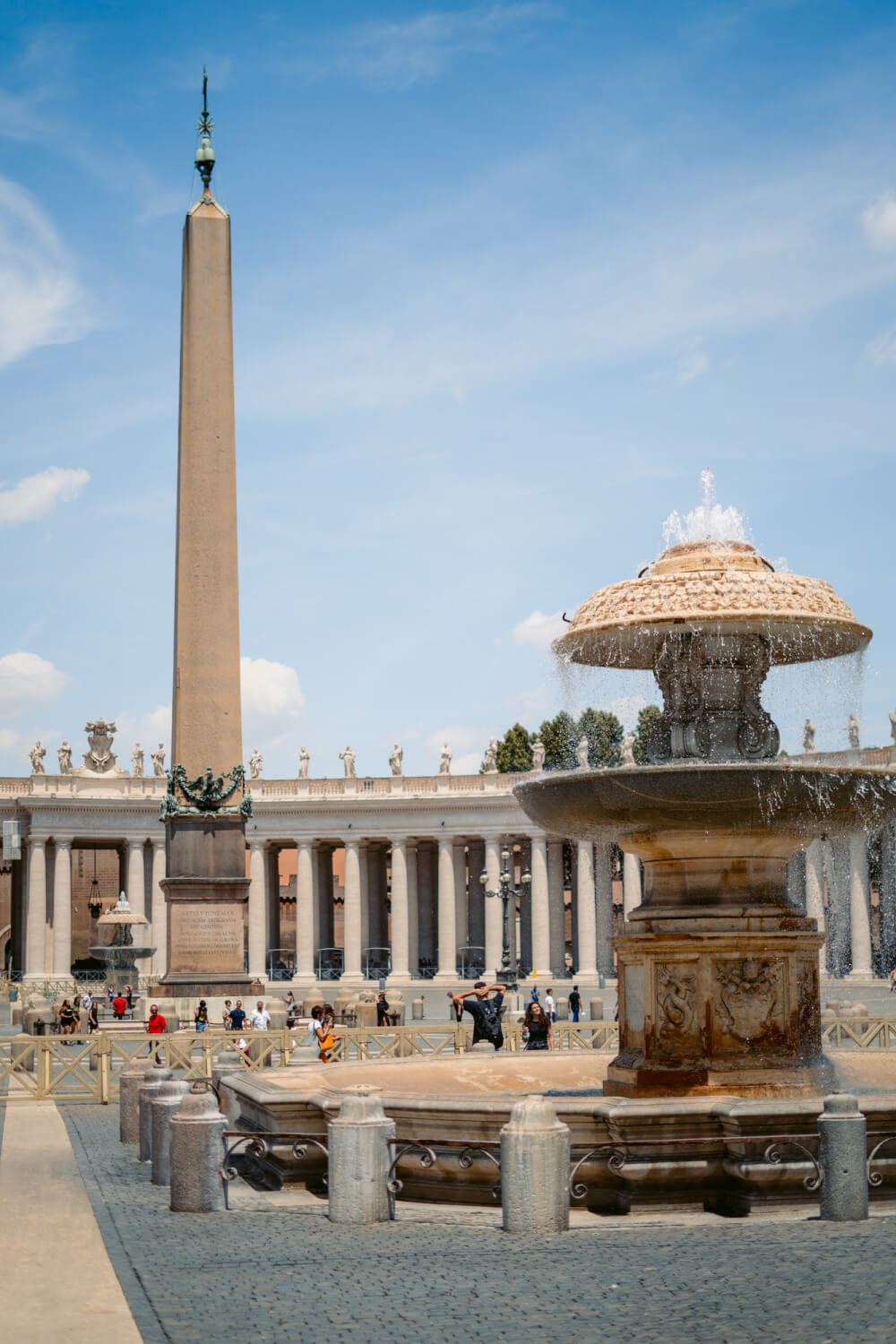
21. Trajan’s Column is hollow, and commemorates an epic victory whose after party lasted for 123 days
At first glance, this 30m tall column may seem like any of the other columns liberally scattered around the city, but take a closer look and you’ll see the impressive details that actually tell an epic story, an old school bas relief comic strip of sorts that chronicles Emperor Trajan’s victory in the Dacian Wars in the early 2nd century.
This victory was so huge for Rome back in the day that they literally partied for 123 days after. The riches they accumulated from the victory would go on to finance Rome’s ongoing conquests and expansion, while (of course) cementing Trajan’s respect in the eyes of his people.
Naturally then, it seemed like a no-brainer that he erected this giant victory column, which depicts key moments from the wars in impressive detail.
A surprising fact to most visitors is that the column is actually hollow, and home to an impressive spiral staircase that opens up to a unique view of Rome. Sadly, this staircase is no longer open to the public, although famous German poet Goethe once climbed it in 1787.
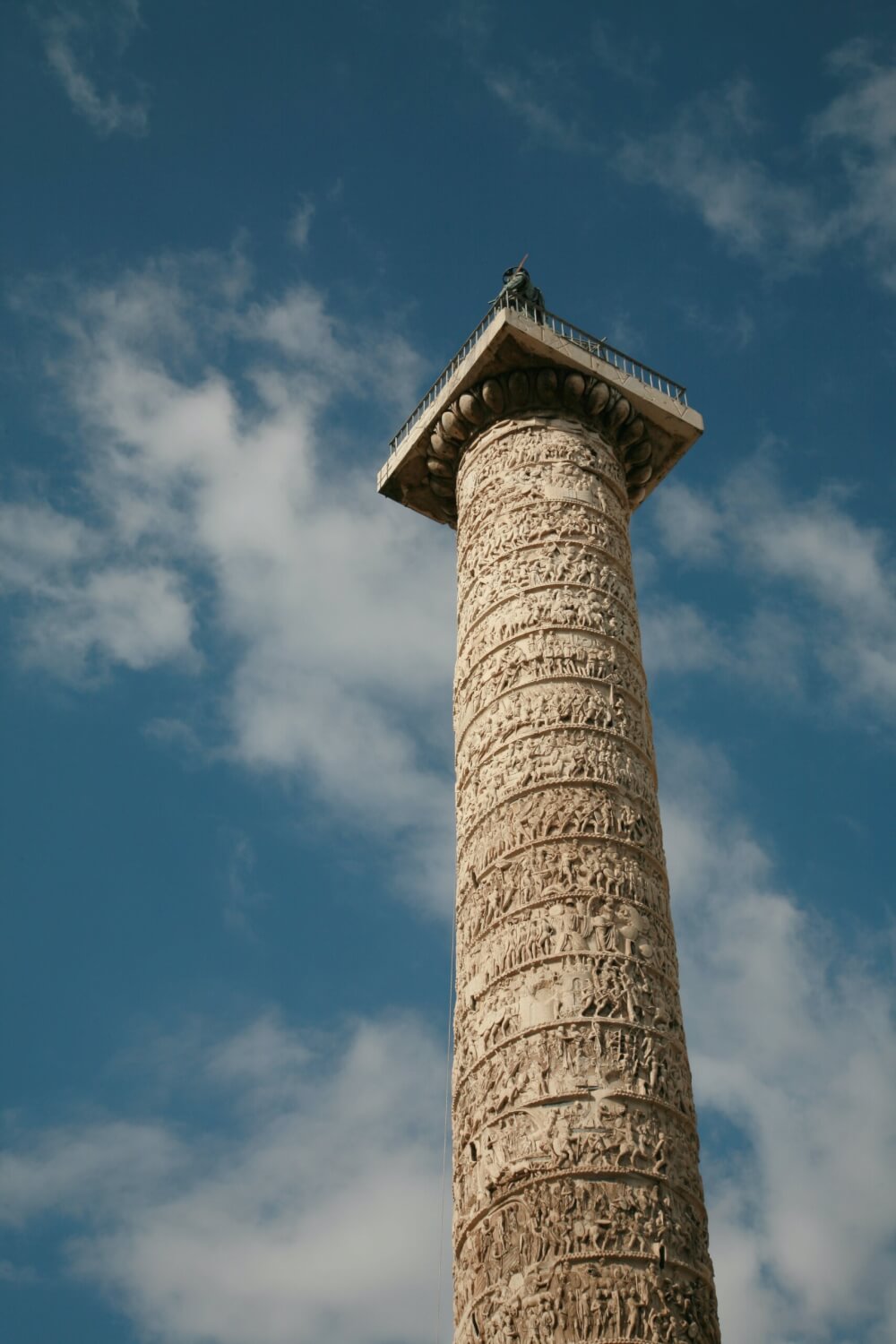
22. Rome may be home to world’s first ever “shopping mall”
Trajan’s markets are an impressive 2nd century complex spanning six stories and over 150 rooms.
While their exact use was likely a combination of commercial and administrative activity, some consider these markets to be the world’s first ever shopping mall… although there’s nary a Jamba Juice in sight.
These markets can be seen as part of Trajan’s Forum, which was built based on orders from (you guessed it, Emperor Trajan!) who wanted a monumental complex to commemorate his wins in the Dacian Wars… because clearly a single column wouldn’t be enough.
Back in the day, this Forum would have been a buzzing hub of public and civic life, with libraries, porticos, a main square and of course, its very own “mall”.
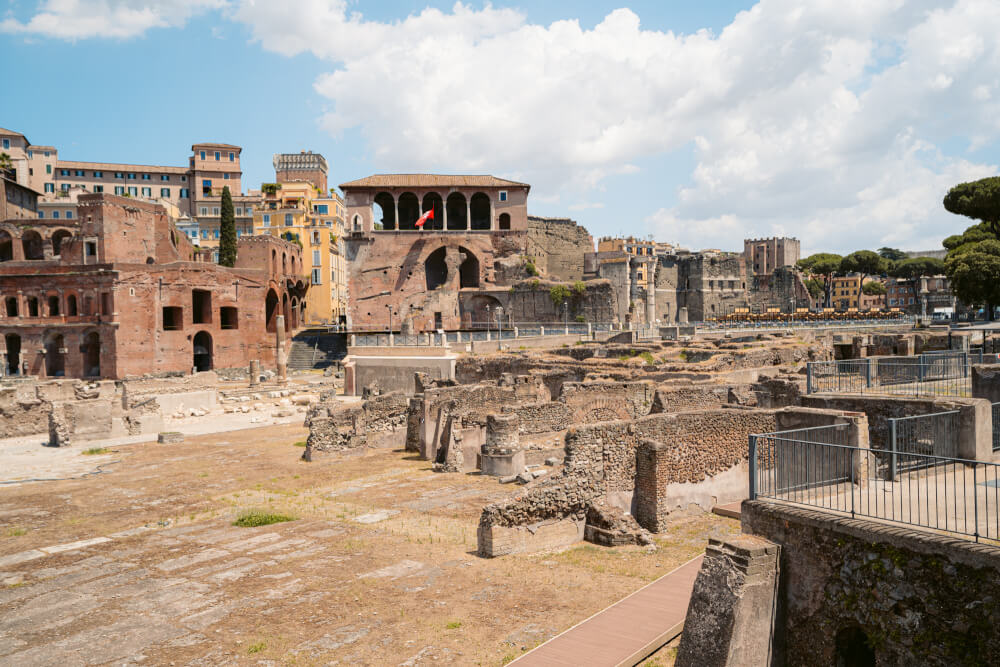
23. Rome’s largest square houses a rejected statue that locals bullied into removal
While Rome’s grand piazzas like Piazza del Popolo and Piazza di Spagna dominate every tourist itinerary, Piazza Vittorio Emanuele II, the city’s largest, is surprisingly often overlooked.
And I get it… Despite being Rome’s largest square, it’s by no means the grandest, but if you’re in the area, a quick stop is worth it, even to just sit down on a bench and catch your breath.
In this square, you’ll find the ruins of a 3rd century Roman fountain, alongside towering palm trees and (most interesting to me) a rejected statue by Mario Rutelli, intended to be the centerpiece for Fontana delle Naiadi in Piazza della Repubblica.
This statue features three men, an octopus and a dolphin locked in a twisty brawl, which soon earned it the (rather mean) nickname of “Fritto Misto”, a popular fried treat composed of mixed seafood.
In fact, locals made fun of it so much that it was soon relegated from its prominent position in Piazza della Republica to this square instead. Artistic bullying at its finest!

24. There’s a giant Moses fountain most tourists miss
The Fontana dell’Acqua Felice, better known as the Fontana del Mosè (AKA the Fountain of Moses) is an often overlooked fountain in Rome that loses tourist traffic thanks to its not-so-ideal location, often marred by traffic.
… Rather fittingly, it was designed by a guy whose last name was literally “Fountain” – Domenico Fontana.
Built in 1585-1588, the importance of this fountain requires a bit of context.
Back in this time, there was only one ancient Roman aqueduct left that brought drinking water into the city. And so, Pope Sixtus V took on the mammoth task of restoring ancient aqueducts, narcissistically naming one after himself (the Acqua Felice, like his birth name, Felice Peretti).
The fountain that stands here today marks the terminus of the Acqua Felice, and (with its controversially large Moses statue in the middle) is said to have been a) a statue likening the Pope to Moses himself and b) a symbol of the Catholic Church serving the needs of Rome’s people by introducing the first new aqueduct in centuries.
… So, perhaps, you can consider this fountain a pretty yet practical piece of propaganda.
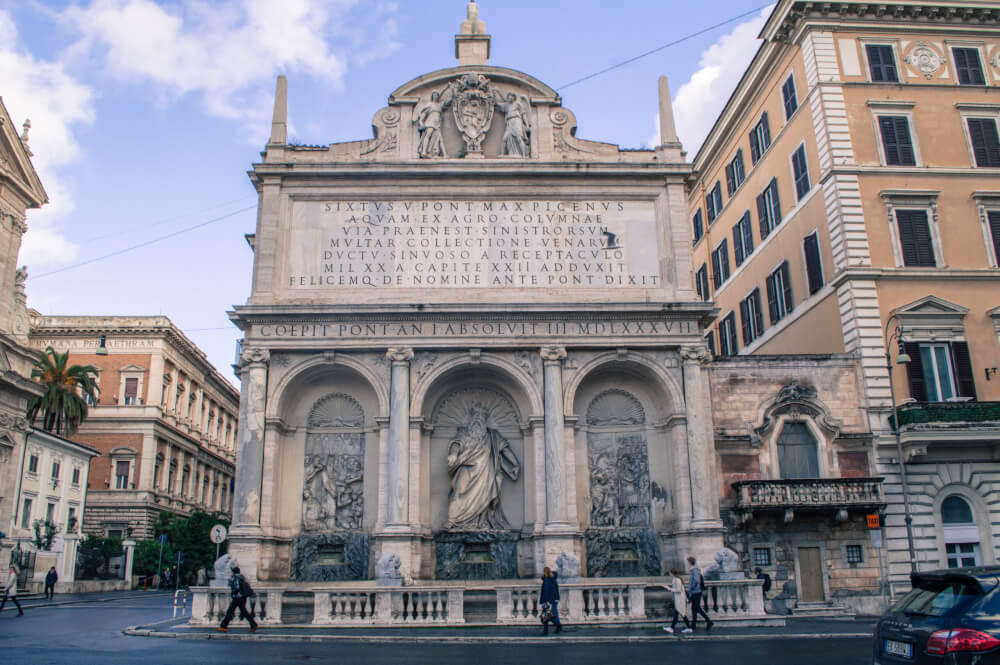
Did I Miss Any of Your Favourite Rome Fun Facts?
Let me know in the comments so I can add more to the list!

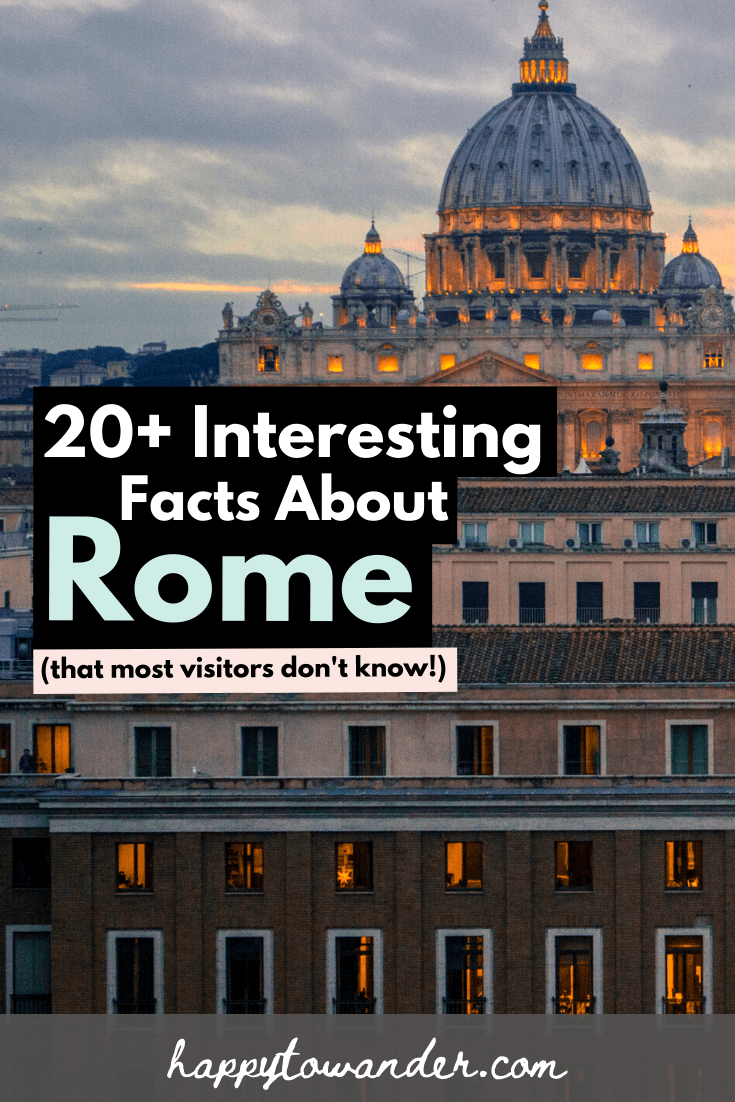
Some great facts here, some we hadn’t heard of!
I think Rome has some of the most beautiful buildings and statues in the world! I hope I can get there some day to see it in person! But your photos are great and will work for now! haha
Thanks so much for sharing!
Vatican city is my favorite place.
Unfortunately, I had very limited time in Rome when I was there in 2018. I can’t wait to go back again. I heard there are no hard and fast protocols to visit post covid.